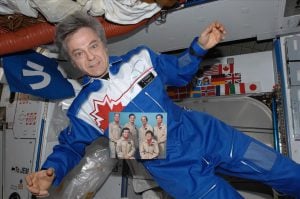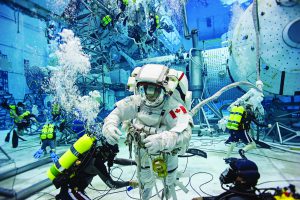
Exploration
Canadian Space Agency astronaut profiles
The men and women that have become part of Canada’s space team
- 1067 words
- 5 minutes
This article is over 5 years old and may contain outdated information.
Exploration

After a year as the Canadian Space Agency’s President, retired general Walter Natynczyk sat down with Canadian Geographic to discuss his role and the agency’s work.
On Canadian companies contributing to space travel
What I’ve learned watching some of the commercialization efforts to get to the International Space Station is that companies such as Space X, Orbital Sciences and Sierra Nevada require the capabilities and technologies that many Canadian companies have. The prime contractors for these efforts need Canadian technology because space activity and space ventures are high risk, and they want to reduce that risk by leveraging the experience and competencies of Canadian companies with proven track records.
On whether Canada could have its own launch facility in the future
There seems to be a huge supply of launch capability and hot competition for it in the global market. When you do the economics, you wonder whether it’s worthwhile putting together a launch capability beyond the very modest sounding-rocket capability that Canada has. [A sounding rocket is a research rocket that tests instruments and stays airborne for only a short period of time]. Right now, it’s not really a financial proposition.
On the Canadian Space Agency’s role in long-duration space flight and missions
There’s a lot happening now to understand the pieces required to enable success and to reduce the risk of long-duration space flight. We’re working closely with NASA and looking at how we can take advantage of the International Space Station to get what we need before we decide where we go next.
One of the key challenges is discovering the impact of long-duration space flight. The International Space Station is the best place to not only study long-duration human space flight, but also to discover new medicines and capabilities for humans. Another challenge is getting a far better rocket propulsion system. When you think about the technology being used today, it’s not much different from Apollo 11. In order to get out to Mars or other destinations, we need to find better and faster ways to get there.
Are you passionate about Canadian geography?
You can support Canadian Geographic in 3 ways:

This story is from the October 2014 Issue

Exploration
The men and women that have become part of Canada’s space team

Exploration
The significant CSA events since Alouette’s launch

Science & Tech
From enduring extreme isolation and psychological strain to operating high-tech robotics and undergoing an intense physical fitness regimen, here’s a glimpse at what it takes to head to space

People & Culture
This year’s roster of Gold Medal recipients at The Royal…